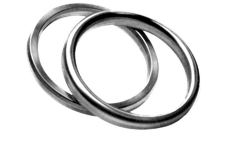Types of Compressors
There are several types of compressors, including:
- Positive Displacement Compressors: These compressors use a mechanism, such as a piston or a rotary screw, to compress the gas by trapping a fixed volume of gas and then reducing the volume. Common gaskets used in positive displacement compressors include spiral wound gaskets, Kammprofile gaskets, and PTFE gaskets.
- Dynamic Compressors: These compressors use a turbine or a centrifugal impeller to compress the gas by increasing the velocity of the gas and then reducing the volume. Common gaskets used in dynamic compressors include spiral wound gaskets and PTFE gaskets.
- Reciprocating Compressors: These compressors use a piston to compress the gas by trapping a fixed volume of gas and then reducing the volume. Common gaskets used in reciprocating compressors include spiral wound gaskets and PTFE gaskets
- Centrifugal Compressors: These compressors use a turbine or a centrifugal impeller to compress the gas by increasing the velocity of the gas and then reducing the volume. Common gaskets used in centrifugal compressors include spiral wound gaskets and PTFE gaskets.










